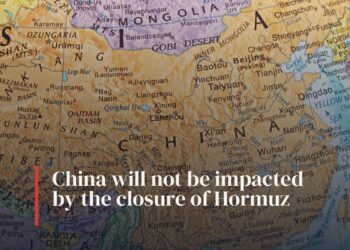The global economy is subject to a myriad of uncertainties, but certain key factors are shaping its future with more predictability. These factors, which range from demography to technological advancements, are crucial in understanding the trajectory of the world economy. In a recent article for FT, Martin Wolf takes what is called the Longue Duree view of global economy. We will read what he has to say on it:
Firstly, demography plays a significant role. The current global population trends are already set for the next few decades. Notably, fertility rates are declining worldwide, with many countries, including China, experiencing rates below replacement levels. In contrast, Sub-Saharan Africa is witnessing higher fertility rates, potentially increasing its global population share by 10 percentage points by 2060. These demographic shifts are influenced by factors such as increased longevity, changes in women’s roles, urbanization, and evolving life priorities.

Secondly, climate change is an undeniable force impacting the global economy. Despite efforts to reduce greenhouse gas emissions, the planet continues to warm, necessitating both mitigation and adaptation strategies. The likelihood of temperatures rising significantly above the 1.5C safety threshold is high, calling for more concerted efforts in addressing climate-related challenges.
Technological advancement is the third key factor. While the pace of innovation may have slowed since the late 19th and early 20th centuries, the information and communications technology revolution has been transformative. Moore’s Law, predicting the exponential increase in components on a silicon chip, has held true, leading to remarkable advancements in data processing and internet usage. As of 2021, a single silicon chip could contain 58.2 billion components, and about 60% of the global population used the internet in 2020. The ongoing development of artificial intelligence is a testament to this technological evolution.

The fourth factor is the global spread of know-how, particularly in Asia. Regions like East, South-East, and South Asia, home to about half of the world’s population, have shown remarkable growth by absorbing and advancing technological knowledge. This trend is likely to continue, shifting the economic center of gravity towards these regions and leading to significant geopolitical changes, as evidenced by China’s rapid economic rise.

Finally, the inherent nature of economic growth itself is a defining feature. Despite recent challenges, including the pandemic, the world economy has grown every year since 1950, with only a few exceptions. The World Bank’s Global Economic Prospects report highlights that even in periods of shock, the global economy has expanded, albeit unevenly across countries and over time.
In conclusion, while short-term shocks often dominate headlines, it’s crucial to focus on these long-term, transformative forces shaping the global economy. Paying attention to these factors will help in better understanding and responding to the challenges and opportunities that lie ahead.












